The LG G3 Review
by Joshua Ho & Anand Lal Shimpi on July 4, 2014 5:00 AM EST- Posted in
- Smartphones
- LG
- Mobile
- Laptops
- G3
Rear Camera Performance
Spatial Resolution
We'll start by measuring the rear facing camera's ability to resolve fine details by shooting at an ISO12233 test target. For now we'll be looking at horizontal and vertical resolution using the sagittal and tangential lines in the upper right of the center of the test chart:
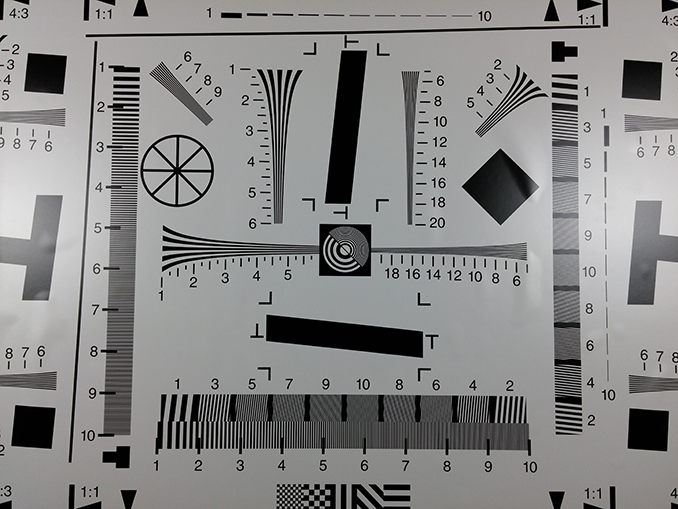
ISO 12233 Test Chart Captured by the LG G3
The gallery below has links to the original chart captures for all of the phones compared in this review:

The G3 does a good job of resolving fine details. The Galaxy S5 is a bit better, but the G3 is much better than its other competitor: the HTC M8. There's not really any improvement here over the G2 thanks to LG's sensor re-use. We do see a bit of difference in LG's white balance at work but in terms of usable resolution, the G3 performs quite similarly to the G2. There are some slight differences in how aliasing appears in the G3's chart but not substantial enough to make a big deal about.
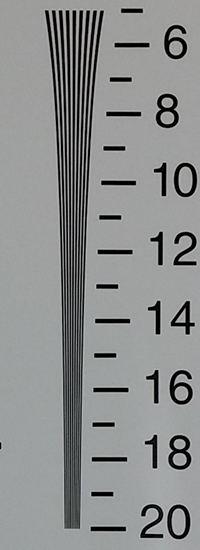
The tangential crops tell a similar story. The G3 doesn't really move the needle compared to the G2, but that's not bad at all. Compared to modern Android flagships, the G3's ability to resolve fine details is quite competitive. I actually wonder if somewhere in the 10 - 13MP range may be the sweet spot, perhaps with slightly larger pixels.
Color Reproduction
LG continues to strike a good balance between vibrant and accurate colors. When properly exposed, the G3's color performance is solid. Grayscale reproduction also looks good. There's a bit more noise than I'd like to see in the swatches but overall the G3 does a good job in this test:
Lab Scenes
In our light controlled lab scene we really see how little has changed between the G2 and G3 cameras. The G2 had a longer capture period at 1/30s compared to 1/40s on the G3, but the results are largely similar. The G2 was a very strong performer, as is the G3.
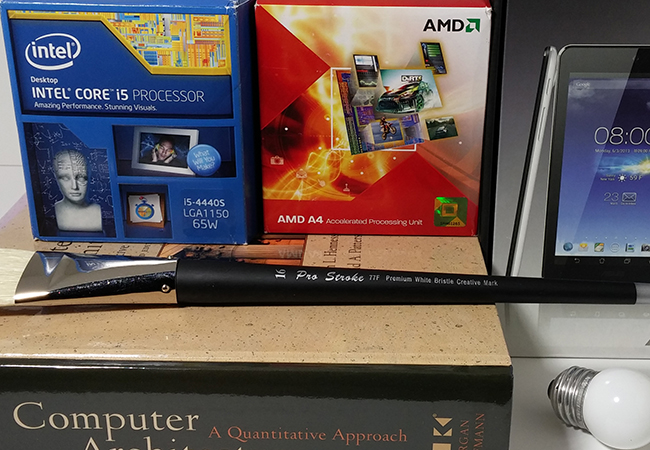
Low light performance was a strength of the G2 due to whatever binning or exposure combining LG did in low light conditions. The G3 continues the trend, although it seems to have a faster shutter speed resulting in a slightly darker scene.
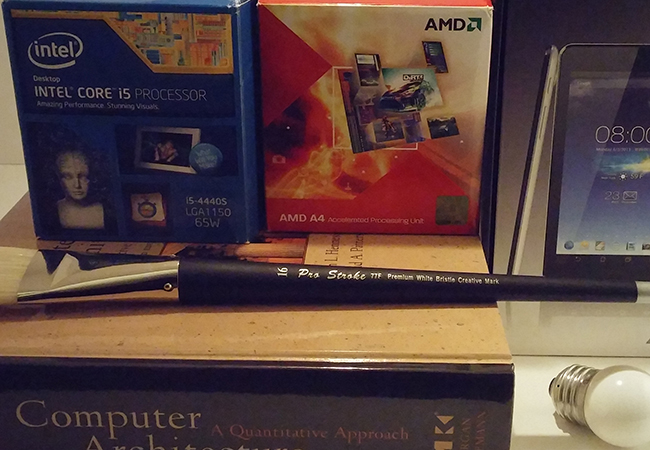
Outdoor Scenes (Night)
Next we transition to some shots on location. First up is the same night shot of a storefront that we used in the Galaxy S 5 review:

Although the lab scenes looked pretty comparable, on location there are substantial differences between the G2 and G3. The G3 definitely does a better job with white balance and color reproduction.
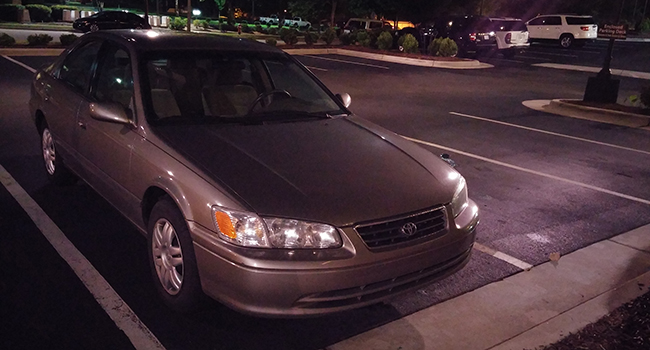
The performance difference is less in favor of the G3 in this shot but overall performance is still better than the Galaxy S5.
Outdoor Scenes (Daylight)
We ran through a new set of locations on the four main Android shooters here. I've pulled out one of the best comparisons below:

The G3's color handling is so much better than on the G2. The latter has more of a blue overcast while the G3's image looks much more natural. The Galaxy S5 by comparison is appreciably sharper (look at the detail in the speed limit sign in the background).
Capture Latency
LG, HTC and Samsung all went to great lengths this generation to reduce focus acquisition latency on their flagships. I believe HTC is partially leveraging its DuoCam sensor as well as a secondary ISP, Samsung turned to Phase Detect AF and a secondary ISP, while LG looked to an IR range finder to help speed up focus acquisition. We've been measuring focus latency over the past few flagship reviews and put the G3 through the same test. Here I used the same ISO 12233 target setup we used for spatial resolution tests but measured average focus acquisition time for a number of points on the chart.
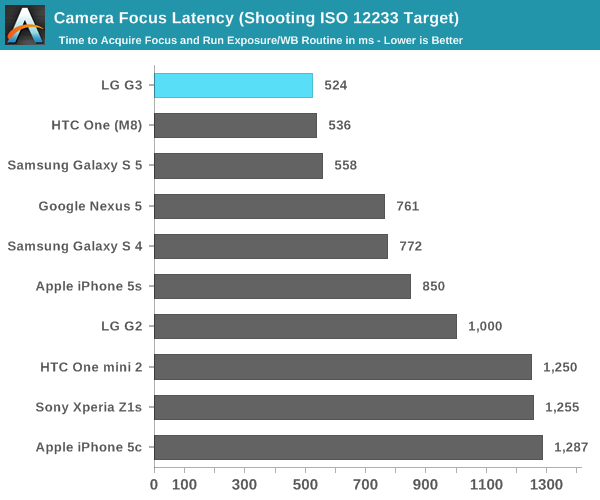
The G3's performance is so much better than the G2, you can grab focus in around half the time now. Compared to the M8 and GS5, the G3 is perhaps a bit quicker. I measured lower minimum focus acquisition time on the G3 than on either flagship, but on average the performance is quite similar to what HTC and Samsung deliver - at least in this test.
Quickly acquiring focus is just one aspect of overall camera latency. How quickly the device can actually capture an image is almost as important. Here we're looking at the time between tapping the shutter button and when the camera UI is responsive again (this is how all devices in this chart, with the exception of the One mini 2, are measured). Another metric that's useful in looking at is how long before the resulting photo is available in the gallery, for the G3 I've included both datapoints. The One mini 2's data corresponds to the latter metric exclusively as the camera UI behaves as if it's immediately responsive after capture but in reality isn't.
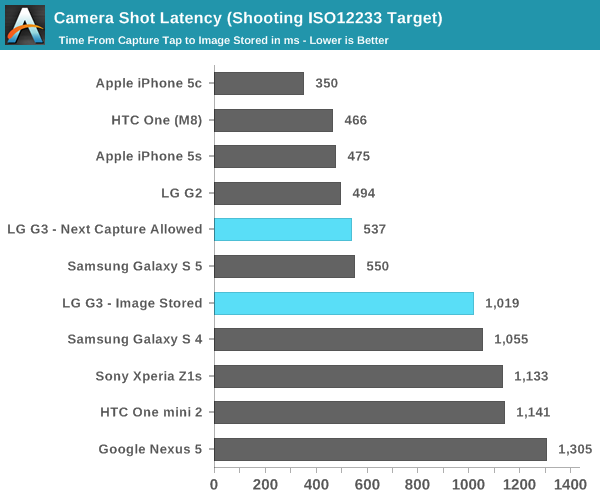
The G3 seems to regress a bit compared to the G2 but overall its peak performance looks decent. If you want immediate access to the captured image you will have to wait about a second, but in reality by the time you tap on the captured image and pull up the gallery you'll exceed this 1019ms latency. Bringing up the gallery is definitely the bottleneck here.
This next chart simply adds the previous two numbers together to provide a look at total camera latency:
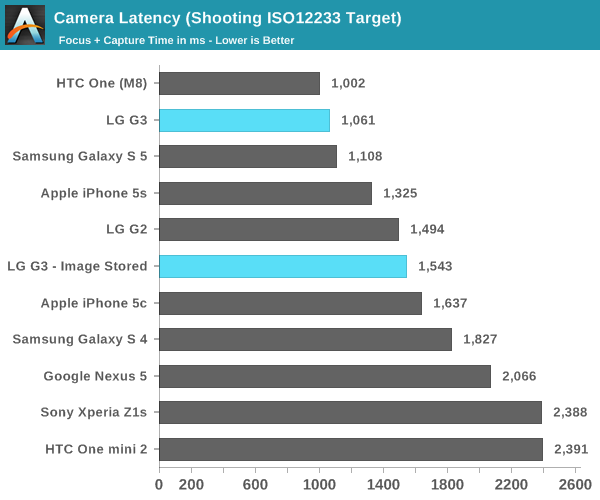
The G3 is quite competitive with the 2014 Android flagships when it comes to overall camera latency. The improvement compared to the G2 is substantial.
Video
The G3 can shoot 4K video at 30 fps and it does so at roughly 30Mbps, up from 20Mbps when shooting 1080p30 video. I included a couple of samples that also engage the device's OIS+:






















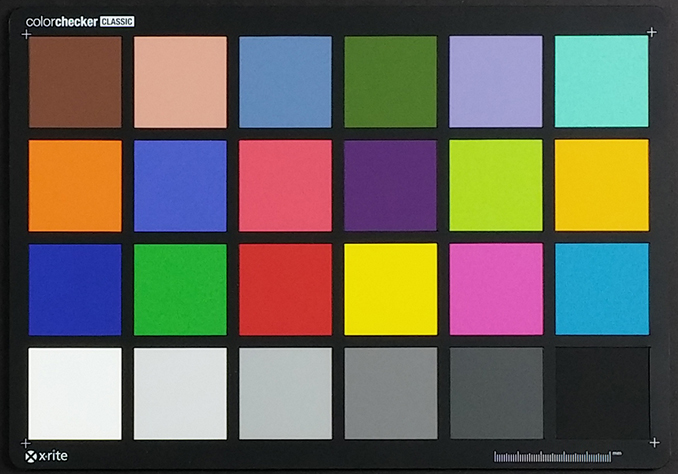






























































174 Comments
View All Comments
sherlockwing - Friday, July 4, 2014 - link
You listed Nexus 4 in the first Display Brightness graph then Nexus 5 in all the rest, could it be a typo?sherlockwing - Friday, July 4, 2014 - link
Nvm, I misread and didn't see Nexus 5.Niteowl360 - Friday, July 4, 2014 - link
Thank you for an awesome review.Technically better than most reviews whilst ensuring the layman remains in touch.
Only thing I found a little strange was the lack of excitement over the display.
Particularly most reviews have pointed to a slightly undersaturated display, in contrast to your findings.
Whilst your review states audio quality on per with the M8, I would have liked you to spend more time on this. After all we are still talking about a device which is primarily a phone!
I'm an HTC purist, but I believe HTC have continued to disappoint in the Camera department.
At the same time I believe the HTC logo and speakers however good, do come at an unacceptable wastage of display real estate.
I have always loved the realistic color saturation of HTC devices, and again raise reference to your findings on the over saturated G3 which seems to be a view shared by yourselves.
Thank you for an excellent overall review. Refreshingly detailed in substance.
Alexey291 - Sunday, July 6, 2014 - link
The display is of below average quality, albeit with higher resolution which reduces performance and battery life.Its a lot of tradeoffs for a small gimmick which is barely visible in reality.
zodiacfml - Friday, July 4, 2014 - link
Nahh, LG knew everything about this and just wants to compete with Samsung. How can LG beat Samsung's AMOLED display?I don't know but LG is probably not going the OLED route because Samsung's tech is superior.
peterfares - Friday, July 4, 2014 - link
This phone looks really awesome, especially finally going back to removable battery and SD card.But what's putting my off is the QHD screen. It's just a waste in every way. Waste of money. Waste of battery power. Waste of CPU and GPU resources. Waste of RAM. Shame. Everything else about this phone is AWESOME.
flyingpants1 - Friday, July 4, 2014 - link
Having onscreen buttons costs you 7% in screen are, and defeats the whole purpose of having a larger screen.Buttons should be capacitive, no bezel, and the browser UI and notification area should be cut down by about half.
Should have made a G2 with front speakers..A
UpSpin - Friday, July 4, 2014 - link
I disagree with you. On screen buttons vanish in full screen apps like games, video players, browser if you like, photo viewer, ... so practically no screen area is lost at all.On screen buttons allow a larger level of customization if you root. For example left right arrow in text fields once the keyboard shows up.
On screen buttons allow edge to edge displays. So practically you get a larger usable display at a smaller physical smartphone size.
If you feel too much space is wasted, I recommend you to root your smartphone, reduce the lcd density value, reduce the on screen button size and use the immersive mode of android.
Death666Angel - Saturday, July 5, 2014 - link
My on-screen buttons disappear when I'm not using them and almost all apps are good enough to use that space to display more stuff. Only means I have to swipe up or down to active them again, which hasn't been a hassle when using the G2 for the past 2 months. The design is much nicer as a result as well. My wifes SGS3 looks so ancient even compared to my Galaxy Nexus.Cruisecontrol - Friday, July 4, 2014 - link
Too bad about the display. That was one of the things I was hoping would make this phone stand out. I guess I'll have to wait to see if Samsung delivers an S5 Prime and what that has to offer.